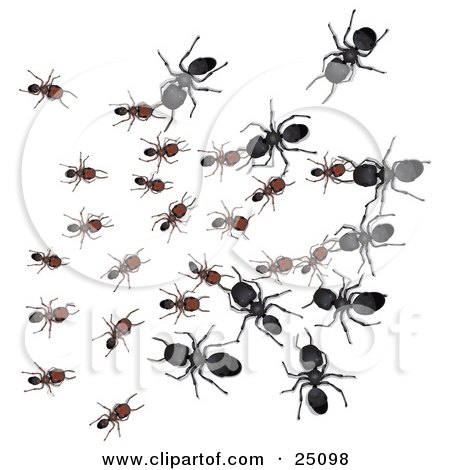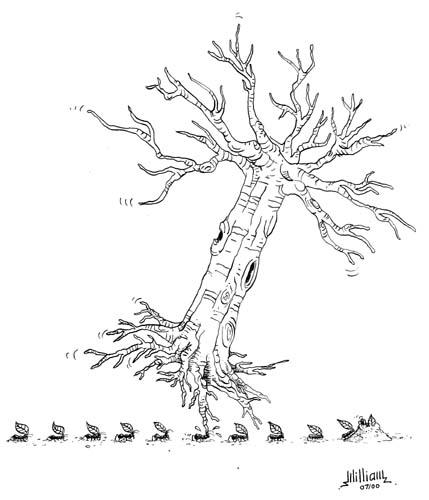 On Saturday whilst discussing the characteristics of Blackswans here, William Buist suggested the importance of this book (Outliers) as a response to one of my comments and wanted to see my analysis of this book. William's suggestion of the book, my second reading of it recently, and the importance of Blackswans have inspired me to create this blog series to reflect and learn from important points in this insightful book titled Outliers by Malcom Gladwell.
On Saturday whilst discussing the characteristics of Blackswans here, William Buist suggested the importance of this book (Outliers) as a response to one of my comments and wanted to see my analysis of this book. William's suggestion of the book, my second reading of it recently, and the importance of Blackswans have inspired me to create this blog series to reflect and learn from important points in this insightful book titled Outliers by Malcom Gladwell.After reading the book twice with fascination (because it provided considerable insights to my cognitive hypotheses with interesting findings), I believe there are important arguments to be considered in this book and to be followed up with further discussions. Since the scope of the book is comprehensive it will not fit into one blog; hence I will focus on one key point in each post.
One of the most important lessons learnt from this book is repeatedly mentioned as the "10,000-Hour Rule". Gladwell claims that the key to success in any field is, to a large extent, a matter of practicing a specific task for a total of around 10,000 hours, 10 years or a decade! He provides well proven examples. I believe him because they are very well known and documented cases.
I fully agree with this 10 thousand hour rule as a person observing how thoughts and concepts are processed and make progress in very complex environments. It took me approximately 10 years to certify globally in my discipline in IBM. It took me over 10 years after my master's degree to start authoring advanced research papers in peer reviewed and refereed scientific journals. It took me 20 years to start my first invention to be patented! It took me over 20 years to learn English which I am still feeling shaky!! I can see that it took 11 years Thomas and Penny to bring Ecademy to this level. Based on this first hand experienced based knowledge confirmed by Malcolm's observations, I have difficulty in understanding anyone who declares expertise on a topic less than 10 years. For some reasons, I kept thinking a lot about Edison and Tesla whilst digesting this rule!!
Let's watch the following 2 clips interviewing Malcolm on this book. These clips may help understand the coverage and importance of the book for those who haven't read it yet. I believe you will laugh at what the male interviewer is good at in the second video; and pay attention to what Bill Gates used to do secretly and why Mozart's early works were crap!:-)
Let's be mindful that this is an eye opening, realistic [an anti-self help] book therefore...! I'd love to obtain your views on this 10 thousand hour rule!
Regards,
Mehmet
Dr. Mehmet YILDIZ || IBM || IT Philosophy || Future|| Leadership || Twitter || Linkedin || Yasni || Naymz|| Superfan
 The article "
The article "
 We all of course have different views and experience on dealing with bad news. This is also very contextual and may vary according to the situation. Maybe we can learn from each other by identifying some practical patterns and handy hints. How do you usually deliver bad news to the related parties who are expected to suffer from or be disadvantaged by the intended severe bad news?
We all of course have different views and experience on dealing with bad news. This is also very contextual and may vary according to the situation. Maybe we can learn from each other by identifying some practical patterns and handy hints. How do you usually deliver bad news to the related parties who are expected to suffer from or be disadvantaged by the intended severe bad news? I'd like to introduce a fresh new approach to computer security modeling nature; from the Wake Forest University! Two keywords scent and ants! Yes, as you may guess, security experts are deploying a new defense modeled after one of nature's hardiest creatures — the ant as reported in this article titled "
I'd like to introduce a fresh new approach to computer security modeling nature; from the Wake Forest University! Two keywords scent and ants! Yes, as you may guess, security experts are deploying a new defense modeled after one of nature's hardiest creatures — the ant as reported in this article titled " The concept, called "swarm intelligence," promises to transform cyber security because it adapts readily to changing threats. Professor of Computer Science Errin Fulp says "In nature, we know that ants defend against threats very successfully. They can ramp up their defense rapidly, and then resume routine behavior quickly after an intruder has been stopped. We were trying to achieve that same framework in a computer system. Our idea is to deploy 3,000 different types of digital ants, each looking for evidence of a threat. As they move about the network, they leave digital trails modeled after the scent trails ants in nature use to guide other ants. Each time a digital ant identifies some evidence, it is programmed to leave behind a stronger scent. Stronger scent trails attract more ants, producing the swarm that marks a potential computer infection."
The concept, called "swarm intelligence," promises to transform cyber security because it adapts readily to changing threats. Professor of Computer Science Errin Fulp says "In nature, we know that ants defend against threats very successfully. They can ramp up their defense rapidly, and then resume routine behavior quickly after an intruder has been stopped. We were trying to achieve that same framework in a computer system. Our idea is to deploy 3,000 different types of digital ants, each looking for evidence of a threat. As they move about the network, they leave digital trails modeled after the scent trails ants in nature use to guide other ants. Each time a digital ant identifies some evidence, it is programmed to leave behind a stronger scent. Stronger scent trails attract more ants, producing the swarm that marks a potential computer infection." I know we mimicked a number of animals for computer security in the past. Even some mythological characters such as three headed Cerberus watching Hades! What other animals or even plants could we model for computer security? Please illustrate your thoughts with your real and/or imaginative animals and their cognitive expertise such as smell, taste, touch, bite are a few for the consideration of your imagination!
I know we mimicked a number of animals for computer security in the past. Even some mythological characters such as three headed Cerberus watching Hades! What other animals or even plants could we model for computer security? Please illustrate your thoughts with your real and/or imaginative animals and their cognitive expertise such as smell, taste, touch, bite are a few for the consideration of your imagination! I didn't fully make up the title of this post, it came from Northwestern University, a research report for media. Their title is "
I didn't fully make up the title of this post, it came from Northwestern University, a research report for media. Their title is " I found their method very interesting and unusual because they examined extensive letter correspondence records of 16 famous writers, performers, politicians and scientists, including Einstein, Darwin, Sigmund Freud, Karl Marx, and Ernest Hemingway, and found that the 16 individuals sent letters randomly but in cycles. They said "No matter what their profession, all the letter writers behaved the same way. They adhered to a circadian cycle; they tended to write a number of letters at one sitting, which is more efficient; and when they wrote had more to do with chance and circumstances than a rational approach of writing the most important letter first."
I found their method very interesting and unusual because they examined extensive letter correspondence records of 16 famous writers, performers, politicians and scientists, including Einstein, Darwin, Sigmund Freud, Karl Marx, and Ernest Hemingway, and found that the 16 individuals sent letters randomly but in cycles. They said "No matter what their profession, all the letter writers behaved the same way. They adhered to a circadian cycle; they tended to write a number of letters at one sitting, which is more efficient; and when they wrote had more to do with chance and circumstances than a rational approach of writing the most important letter first." I am unable to find more on this behavioural study however added this paper to my to read list as soon as it becomes available. Related to this topic, I noticed Mark Rhodes posted an interesting blog on Friday titled "
I am unable to find more on this behavioural study however added this paper to my to read list as soon as it becomes available. Related to this topic, I noticed Mark Rhodes posted an interesting blog on Friday titled "